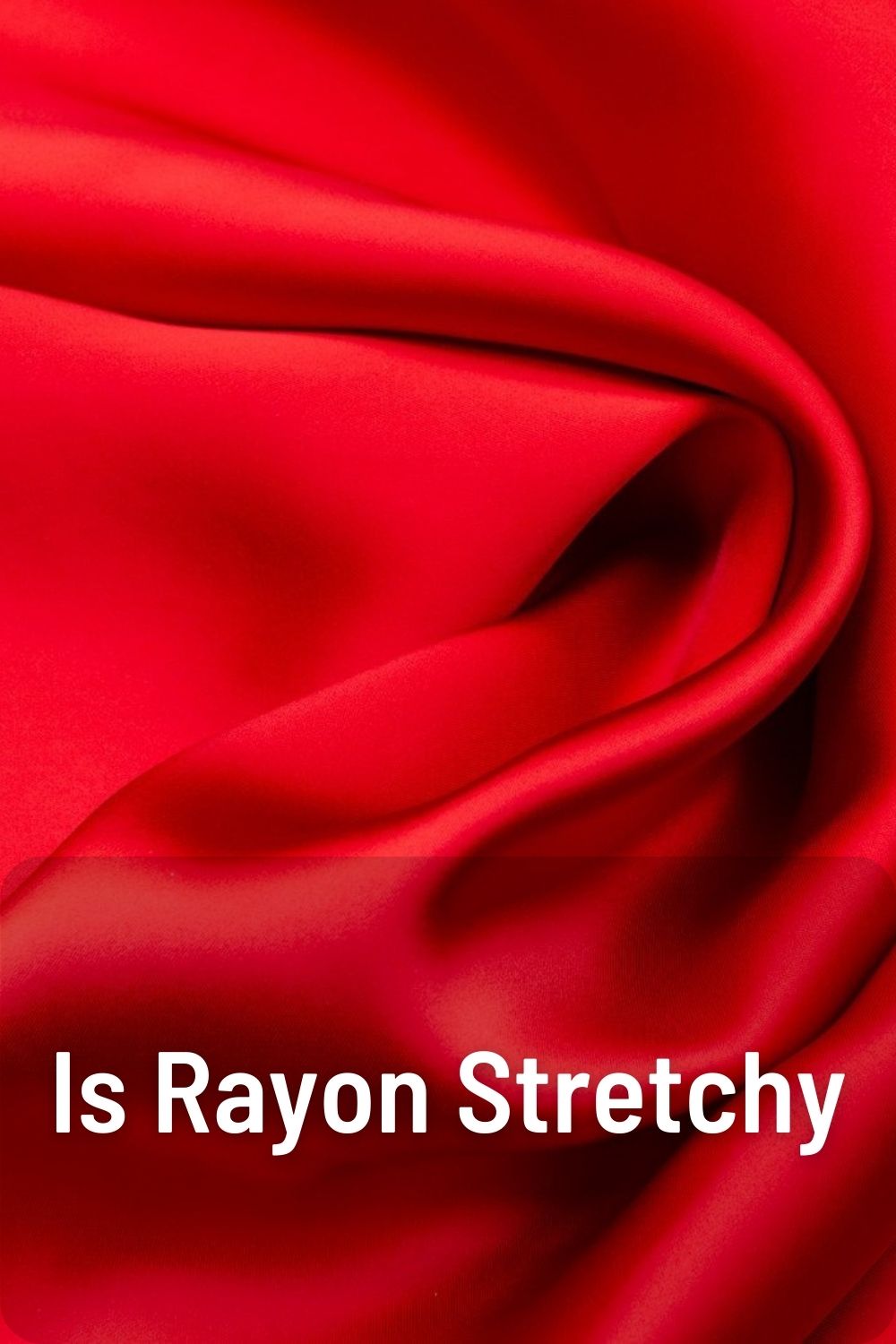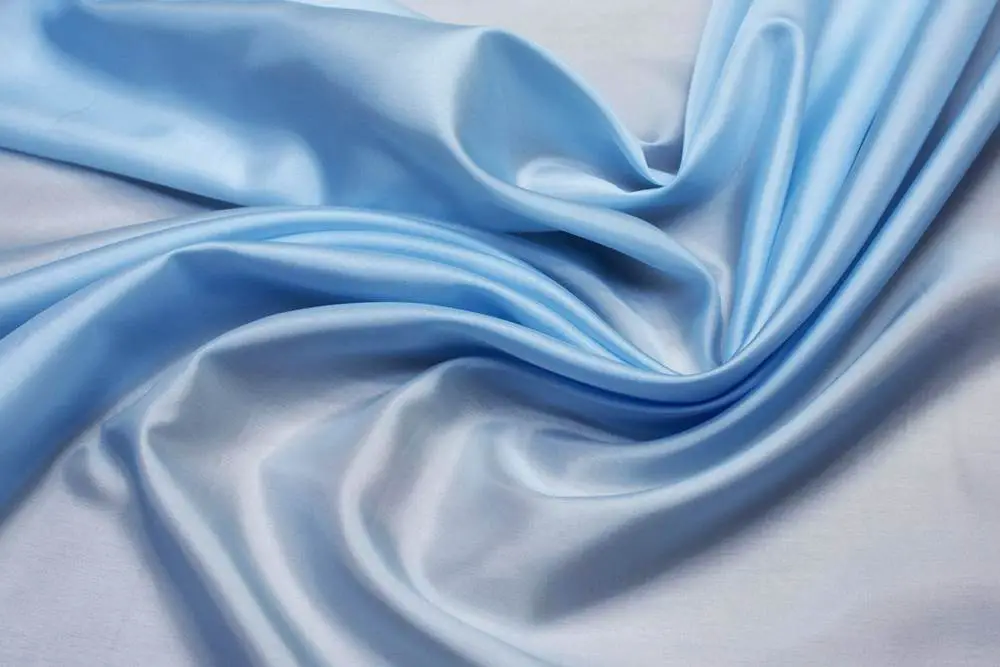
Rayon is a man-made fabric that is commonly used in clothing and other textiles. One of the key properties of rayon that makes it so versatile is its ability to stretch. However, the amount of stretch can vary depending on the type of rayon and how it is manufactured. In this comprehensive guide, we’ll examine is rayon stretchy and how to stretch rayon through various techniques.
Table of Contents
What is Rayon?
Before diving into the stretch properties of rayon, let’s first understand what rayon is.
Rayon is a semi-synthetic fabric made from cellulose fibers, which are derived from natural sources like wood pulp or cotton linters. The cellulose is treated with chemicals like caustic soda, ammonia, acetone, and sulphuric acid to produce rayon fibers.
While rayon is man-made, it is not entirely synthetic since it utilizes natural cellulose. This gives rayon the look and feel of natural fabrics like silk, linen, and cotton.
Some key properties of rayon include:
- Breathability
- Good drape and drapeability
- Smooth texture
- Affordability
- Ability to dye easily
- Biodegradability
Rayon became commercially popular in the 1900s as a substitute for silk. Today it is widely used to make clothing like dresses, blouses, underwear, and linings as well as furnishings like bedsheets, blankets, and upholstery.
Types of Rayon

There are many different types of rayon, each with unique manufacturing processes. The main types of rayon include:
Viscose Rayon
This is the most common type of rayon. Viscose rayon is produced by treating cellulose with sodium hydroxide to form alkali cellulose. This is then treated with carbon disulphide to form cellulose xanthate, which is dissolved in a caustic solution. The viscose solution is forced through spinneret nozzles to form fibers.
Modal Rayon
Modal rayon is a variety of viscose rayon that is stronger and softer than regular viscose. It is made using a high-wet modulus process that produces fibers that are more stable when wet.
Lyocell Rayon
Lyocell is made using a solvent spinning process that utilizes N-methylmorpholine N-oxide as the solvent. This makes the fibers stronger and more durable than regular viscose rayon. Lyocell also has better drapeability.
High Tenacity Rayon
As the name implies, high tenacity rayon has a higher tensile strength. It is commonly used in industrial settings for products like tires, belts, hoses, and ropes.
Cuprammonium Rayon
This type of rayon uses copper and ammonia as the solvents for the cellulose. Cuprammonium rayon has a silky texture and high luster, similar to silk.
Is Rayon Stretchy?
The stretchability of rayon depends on multiple factors:
Type of Rayon
The type of rayon affects how much the material stretches. Viscose and modal rayon have moderate stretch, lyocell has minimal stretch, cuprammonium has almost no stretch, and high tenacity rayon is non-stretchy.
Viscose and modal rayon are the most stretchable types of rayon. The looser weave provides more flexibility to the fabric structure, allowing it to extend more.
Lyocell rayon is less stretchy since the fibers are more tightly packed together. The strong intermolecular hydrogen bonding between lyocell fibers restricts the fabric from stretching easily.
Cuprammonium and high tenacity rayon have very rigid, parallel polymer chain structures that do not allow the fabric to flex and stretch.
Weave of the Fabric
The weave pattern can affect how stretchy the resulting rayon fabric is.
- Plain weave – This basic over-under weave has minimal elasticity since the threads are tightly interlaced.
- Twill weave – The diagonal pattern gives the fabric a bit more drape and stretch.
- Satin weave – With floats over multiple threads, satin has the most drape and ability to stretch.
So rayon made from a satin weave will be more stretchable compared to a plain weave.
Blends
Rayon is commonly blended with other fabrics like cotton, wool, silk, polyester, spandex, etc. The other fabric components can impact the stretchiness.
For example, rayon blended with spandex will have exceptional stretch since spandex fibers can elongate over 500% of their length. Compared to pure rayon, a rayon-spandex blend will stretch much more.
Finishing
Chemical finishing processes are frequently applied to rayon to alter the handfeel, sheen, texture, and performance. For instance, calendering causes the fibers to orient more parallelly, reducing stretch. Sanforization can also restrict fabric growth and elasticity.
So depending on the types of finishing, the amount of stretch in rayon can vary. Unfinished, raw rayon generally has more stretch.
Construction Method
How the raw rayon is converted into a textile or garment affects stretch. Tighter constructions like dense, narrow knits will be less yielding compared to loose crochet or mesh fabrics.
For clothing like dresses, skirts, and tops made from woven rayon, manufacturers can add darts, tucks, and pleats to provide more flexibility and “give”. Therefore, the way the rayon fabric is ultimately constructed is a key determinant of stretchiness.
How to Stretch Rayon
While rayon has moderate inherent stretch, there are ways to intentionally stretch out rayon fabrics and garments to get more flexibility and elongation. Here are some common techniques:
Pulling and Tugging
A simple way to stretch out a rayon garment is to gently pull and tug on the material. For tops and dresses, grasp the shoulders and tug diagonally downwards. For pants, grasp the waistline and tug outwards. Apply even tension as you pull – do not yank aggressively to avoid ripping seams.
This tugging action elongates the fibers and can add stretch over time. Be cautious when pulling on more delicate rayons like cuprammonium and high tenacity varieties.
Hanging
Allowing gravity to stretch rayon is an easy hands-free approach. After washing, hang rayon tops, dresses, and other garments on hangers. The weight of the wet garment will gently pull on the fibers. As the garment dries, the fibers orient themselves in a more stretched out state.
You can also fill the garment with heavy objects like books to provide more downward force and get maximum stretch. This is an excellent way to stretch out rayon-based sweaters and cardigans.
Ironing
Ironing clothing applies heat and tension to stretch fabrics like rayon. When ironing a rayon garment, keep the iron moving continuously rather than holding it in place. The heat and pressure will relax the fibers and allow them to extend further.
Focus on areas that need more stretch like the shoulders, elbows, hips, and knees. Be careful with hot irons as excess heat can damage rayon fabrics.
Steaming
A garment steamer provides moist heat to relax and stretch fabrics. Similar to ironing, hold the steamer head 2-3 inches above the garment surface and move continuously to avoid damage. Slowly move across areas that are tight and need more give.
The combination of heat and steam enhances the mobility of the rayon fibers. Hang or lay flat after steaming – do not bunch or fold the garment to maintain the elongated fibers.
Washing
Pre-wash rayon garments prior to construction to maximize stretch. Machine or hand washing followed by laying flat to dry allows the fibers to relax and extend. Agitation from washing breaks down sizing, finishes, and warp/weft threads to give the fabric more drape.
Only wash rayon with mild detergent and cool water to prevent damage. Repeat washes to incrementally increase stretch over time.
Wet/Heat Setting
For highly stretchy custom garments, manufacturers can set woven rayon fabrics into a stretched state. The fabric is tensioned on a frame and held taut. Steam or heat is then applied to set the fibers while stretched.
When the fabric cools and tensions is released, the fibers retain the stretched out length. This pre-stretching ensures maximum elasticity in the final garment.
Best Practices for Stretching Rayon
- Check the rayon type – Viscose, modal, and lyocell are best for stretching
- Use gentle tugging motions rather than aggressive pulling
- Try hanging, ironing, steaming, and washing techniques
- Focus on tight areas like shoulders, sleeves, waists, and knees
- Apply even, continuous pressure for ironing and steaming
- Allow garments to cool and settle before wearing
- Pre-wash woven rayon yardage prior to construction
Optimizing Stretch in Rayon Garments
There are also design and construction methods to maximize stretch in rayon clothing:
- Choose loose, flowing silhouettes with minimal seams
- Add darts, tucks, and pleats to woven garments
- Select flexible, stretchy trims and notions
- Use zigzag or overlock stitches for seams
- Cut bias tape strips to add diagonally-oriented stretch
- Line garments with lightweight, stretchy fabrics
- Sew knit rayon on a serger machine for maximum stretch retention
Care and Handling for Stretchy Rayon
Proper care is required to keep rayon stretchy over time:
- Machine or hand wash cool, gentle cycle
- Hang dry or lay flat to dry
- Avoid overly hot irons
- Dry clean only when necessary
- Store folded loose, not on hangers
- Prevent sharp creases when folded
- Quickly remove stains to avoid setting
- Follow individual garment care labels
Conclusion
While rayon possesses only moderate inherent stretch, there are many techniques to intentionally stretch rayon clothing, textiles, and yardage. Understanding the rayon type, construction method, and applying gentle tugging, hanging, ironing, steaming, and washing allows the fibers to extend and provides exceptional drape and stretch. With proper care and handling, rayon garments can retain optimal elasticity and flexibility.
Frequently Asked Questions
Is viscose rayon stretchy?
Yes, viscose rayon has good stretch and elasticity compared to other types of rayon. The loose weave provides flexibility to the fabric structure.
Does modal rayon stretch?
Modal rayon has fairly good stretch, although not as much as viscose rayon. The tight, compact knit construction of modal limits stretch compared to the looser woven viscose.
Is lyocell stretchy?
Lyocell rayon has minimal stretch. The strong hydrogen bonding between lyocell fibers restricts the fabric’s stretch and elasticity.
Can you stretch rayon like cotton?
Yes, rayon can be stretched using similar techniques as cotton like gently tugging, washing, and heat/steam methods. However, rayon has more natural stretch than cotton.
Does rayon shrink when stretched?
Rayon may shrink slightly after stretching due to the fibers relaxing. But the overall stretched dimensions will remain, unlike synthetics that revert completely back to the original size.